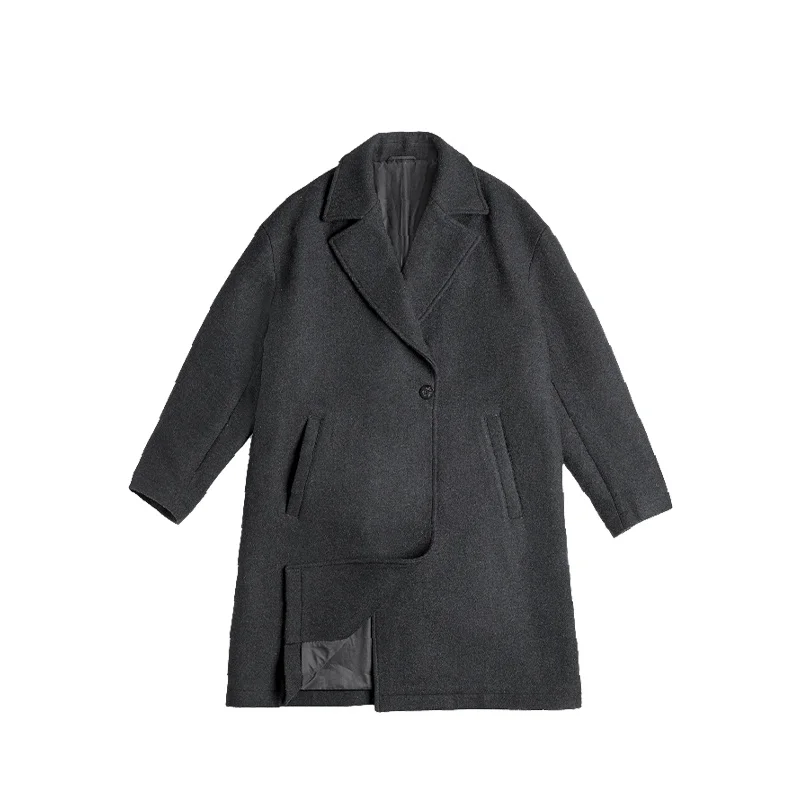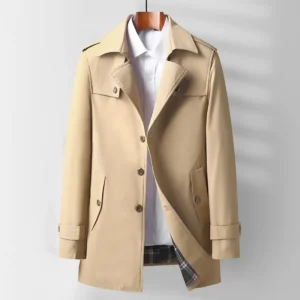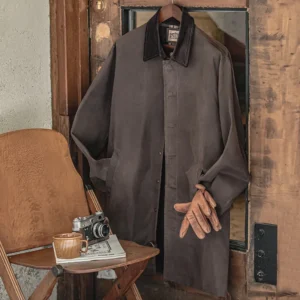The Enduring Appeal: Why a Perfectly Fitted Cashmere Overcoat is Worth the Investment
A cashmere overcoat represents the pinnacle of luxury outerwear, combining exceptional softness with remarkable warmth in a surprisingly lightweight package. What truly sets cashmere apart is its natural temperature regulation – keeping you comfortably warm in cold weather without overheating as conditions change.
While the material itself is special, the fit of your overcoat transforms both how it looks and feels. A well-fitted cashmere coat drapes elegantly across your shoulders, creates a flattering silhouette, and allows comfortable movement – all while providing maximum protection from the elements. The difference between an ill-fitting and perfectly tailored cashmere coat is the difference between looking like you borrowed someone else’s garment and looking like you stepped out of a custom tailor’s workshop.
When you invest in a quality cashmere overcoat, you’re acquiring more than just winter outerwear – you’re purchasing a garment that can provide decades of service when properly fitted and maintained. Consider these remarkable properties:
- Cashmere provides up to 8 times more warmth than regular sheep’s wool
- The fibers become softer with proper wear and care
- A well-fitted cashmere coat elevates everything from jeans to formal attire
- With correct fit and maintenance, it becomes a heritage piece that improves with age
In this comprehensive guide, we’ll explore everything you need to know about achieving the perfect fit, enhancing comfort, and maintaining your cashmere overcoat for years of enjoyment. Whether you’re considering a new purchase or looking to maximize the potential of your current coat, understanding the value of a cashmere overcoat is the first step toward making this luxury garment a cornerstone of your wardrobe.
Decoding the Ideal Cashmere Overcoat Fit: A Comprehensive Guide
Proper fit is the dividing line between an average-looking coat and a truly exceptional one. Beyond appearances, fit directly impacts your comfort, the coat’s warmth retention, and even its longevity. An ill-fitting overcoat strains at stress points, leading to premature wear and potential damage to the delicate cashmere fibers.
When assessing the fit of a perfect cashmere overcoat, pay special attention to these critical areas:
- Shoulders – the foundation of proper overcoat fit
- Length – affects both style and functionality
- Sleeves – crucial for comfort and polished appearance
- Body – determines overall silhouette and layering capacity
- Collar – often overlooked but essential for comfort and style
The ideal fit strikes a careful balance – allowing enough room for layering underneath while maintaining a clean, flattering silhouette. Your personal style may influence whether you prefer a more classic, roomier fit or a contemporary, more tailored silhouette. However, certain fit principles remain universal regardless of style preferences.
Let’s examine each component in detail to help you identify the perfect fit.
The Shoulders: Your Foundation for Perfect Fit
The shoulders form the structural foundation of your overcoat, making them the most crucial element to get right. When the shoulder fit is correct, the rest of the coat has a better chance of draping properly. When it’s wrong, no amount of tailoring can fully correct the issue.
The ideal shoulder fit positions the shoulder seam precisely at the edge of your natural shoulder. This creates a clean line that transitions smoothly from shoulder to sleeve without any of these common problems:
- Divots or dimpling in the upper sleeve
- Horizontal wrinkles across the upper back
- Shoulder seams that extend past your natural shoulder
- Restricted movement when reaching forward
To test shoulder fit, try this simple movement check: Cross your arms in front of your chest, then reach forward as if to shake someone’s hand. The coat should move comfortably without significant pulling across the upper back or shoulders. If you feel restriction or see strain in these areas, the shoulders are too tight.
Remember that your overcoat needs to accommodate whatever you’ll wear underneath, whether that’s a suit jacket or a thick sweater. The wool overcoat alternatives follow similar fitting principles, but cashmere’s lighter weight requires particular attention to shoulder structure.
Overcoat Length: Balancing Style, Warmth, and Proportion
The length of your cashmere overcoat affects not just its style but also its warmth, functionality, and how it complements your body proportions. There are three common length options, each with distinct advantages:
- Above knee (38-40 inches for a 5‘10” man): Modern, versatile, easier mobility
- Knee-length (42-44 inches): Classic, balanced proportions, traditional elegance
- Below knee (46+ inches): Maximum warmth, dramatic appearance, formal presence
Your height should influence your length choice. For shorter men (under 5‘8”), an above-knee or mid-thigh length prevents the coat from overwhelming your frame. For average height (5‘8”-6’), a knee-length coat typically offers the most balanced proportions. Taller men can confidently wear longer styles, even reaching mid-calf for a commanding presence.
Beyond height, consider your typical usage. If you frequently sit during commutes, a slightly shorter coat prevents uncomfortable bunching. For maximum cold weather protection, longer styles offer better coverage. The coat length styling guide provides additional perspective on how different lengths complement various body types and style preferences.
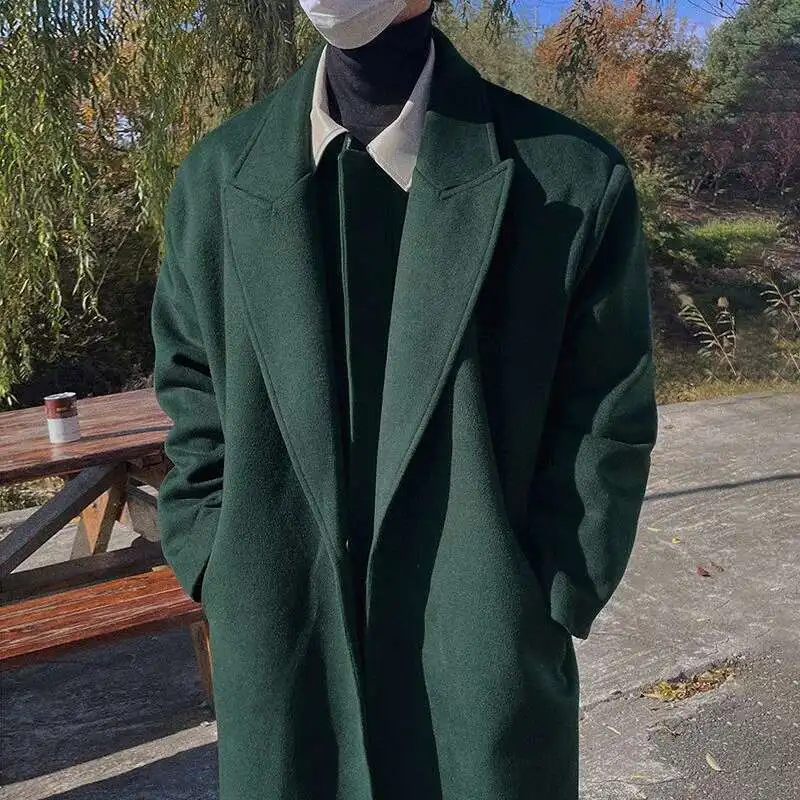
Sleeve Length: Precision for Polish and Functionality
Sleeve length might seem like a minor detail, but it significantly impacts both the functionality and appearance of your overcoat. The ideal sleeve should extend to the base of your thumb when standing with arms relaxed at your sides. This length ensures proper coverage in cold weather while maintaining a polished appearance.
When wearing formal attire, your overcoat sleeves should allow approximately 1/4 to 1/2 inch of shirt cuff to show when your arms are at your sides. With more casual wear like sweaters, the overcoat sleeve should fully cover your underlayers without extending past your wrist bone.
To properly assess sleeve length:
1. Stand naturally with arms at your sides
2. Check where the sleeve ends (should hit the base of your thumb)
3. Bend your arm slightly as if checking your watch
4. Ensure the sleeve doesn’t ride up excessively (some movement is normal)
Sleeve length is one of the simpler alterations a tailor can make, typically costing between $40-75 depending on your location and the coat’s construction. Unlike major structural changes to the shoulders, sleeve adjustments (within 1-2 inches) rarely compromise the coat’s design or proportion.
The Body: Achieving the Perfect Silhouette
The body of your overcoat determines its overall silhouette and comfort level. The ideal fit allows enough room for layering while maintaining a clean line without excess fabric. When buttoned, your overcoat should:
- Create a smooth silhouette without pulling or horizontal wrinkles
- Allow enough room to comfortably fit a flat hand inside at chest level
- Show no strain at the button closure points
- Permit comfortable sitting without excessive tightness across the midsection
To test the body fit, try the “hug test” by crossing your arms across your chest. This movement should feel comfortable without significant restriction. Then button the coat fully and sit down – you should be able to do so without the coat splaying open awkwardly or feeling constrained.
The body silhouette typically follows one of two patterns: a classic straight cut with minimal tapering, or a more contemporary silhouette with subtle waist suppression. Your body type and personal style will determine which is more flattering, though a moderate silhouette with slight shaping often proves most versatile and timeless.
Common body fit issues include excess fabric at the waist (creating a boxy appearance) or tightness across the chest when buttoned (causing the lapels to bow outward). Fortunately, moderate adjustments to the body can be made by a skilled tailor through waist suppression or strategic button repositioning.
Collar Fit: The Often Overlooked Detail
The collar of your overcoat might seem secondary to other fit elements, but it plays a crucial role in both appearance and comfort. A properly fitting collar should:
- Sit flush against your neck without gapping
- Allow comfortable movement when turning your head
- Lay flat against the back of your neck
- Rise high enough to protect against cold wind without choking
To test collar fit, button your coat fully and turn your head side to side. The collar should move naturally with you without significant restriction or gapping at the back of the neck. When the collar stands away from your neck, it not only looks awkward but also allows cold air to infiltrate.
Different collar styles have specific fit considerations. For instance, a classic notch lapel should roll smoothly from the collar to the lapel break, while a more structured stand-up collar should maintain its shape without collapsing. The collar should complement the overall style of your long overcoat, whether you prefer a more traditional or contemporary design.
Collar fit issues can be challenging to correct after purchase, making this an important element to evaluate carefully before buying.
The Tailoring Option: Achieving a Bespoke-Like Fit
Even the finest ready-to-wear cashmere overcoats often benefit from minor tailoring adjustments to perfect their fit. Strategic alterations can transform a good coat into one that looks custom-made for your frame.
Common alterations that significantly improve fit include:
- Sleeve length adjustment (typically $40-75)
- Waist suppression for a more defined silhouette ($60-100)
- Button repositioning to optimize closure ($20-30)
- Sleeve narrowing for a more contemporary look ($50-80)
- Minor shoulder padding adjustments ($75-120)
However, be aware that major structural changes, particularly to the shoulders or overall length, are often impractical or prohibitively expensive. The shoulders of an overcoat are especially complex to alter, involving multiple layers of fabric, padding, and sometimes canvas structure.
When seeking a tailor for your cashmere overcoat, look specifically for someone with experience working with luxury outerwear. Request examples of their previous work with overcoats, and expect the process to take 1-2 weeks depending on the alterations needed. Ideally, plan these adjustments well before you need the coat for the season.
Enhancing Comfort in Your Cashmere Overcoat: Expert Tips
While proper fit forms the foundation of comfort, several additional factors contribute to the overall wearing experience of your cashmere overcoat. True comfort extends beyond just how the coat fits – it encompasses how the garment feels against your body, how it accommodates movement, and how it performs in various conditions.
Cashmere naturally possesses several comfort-enhancing properties, but understanding how to maximize these attributes can significantly elevate your experience. The sections that follow will explore cashmere’s unique properties, strategic layering techniques, movement considerations, and quality construction elements that collectively determine comfort.
By implementing these comfort-enhancing strategies, you can extend both the seasonal wearability and daily wearing time of your coat, ensuring you extract maximum value from your cashmere coat’s warmth capabilities and comfort potential.
Understanding Cashmere’s Comfort Properties
Cashmere’s legendary comfort stems from its unique fiber structure. Unlike ordinary wool, cashmere fibers are exceptionally fine – typically measuring just 15-19 microns in diameter compared to regular wool’s 20-40 microns. This fineness creates the remarkably soft hand-feel that makes cashmere so coveted.
Beyond softness, cashmere offers exceptional thermal properties:
- Superior insulation: Cashmere fibers contain microscopic air pockets that trap body heat
- Impressive warmth-to-weight ratio: A quality cashmere coat weighing 4-5 pounds can provide the warmth of a wool coat nearly twice as heavy
- Natural breathability: The fibers regulate temperature by allowing excess heat and moisture to escape
- Adaptability: Cashmere adjusts to your body temperature, providing warmth without overheating
Quality indicators significantly impact comfort performance. Two-ply cashmere (where two yarns are twisted together) offers good durability with moderate warmth, while three-ply provides enhanced insulation and longevity but with slightly less softness. Understanding the differences between pure cashmere versus blended options helps you select the ideal balance of warmth and softness for your needs.
The grade of cashmere also matters significantly. Grade A fibers (under 16 microns) provide exceptional softness and lighter weight, while Grade B (16-19 microns) offers slightly less softness but often greater durability. Many premium overcoats use a blend of grades to balance comfort with longevity.
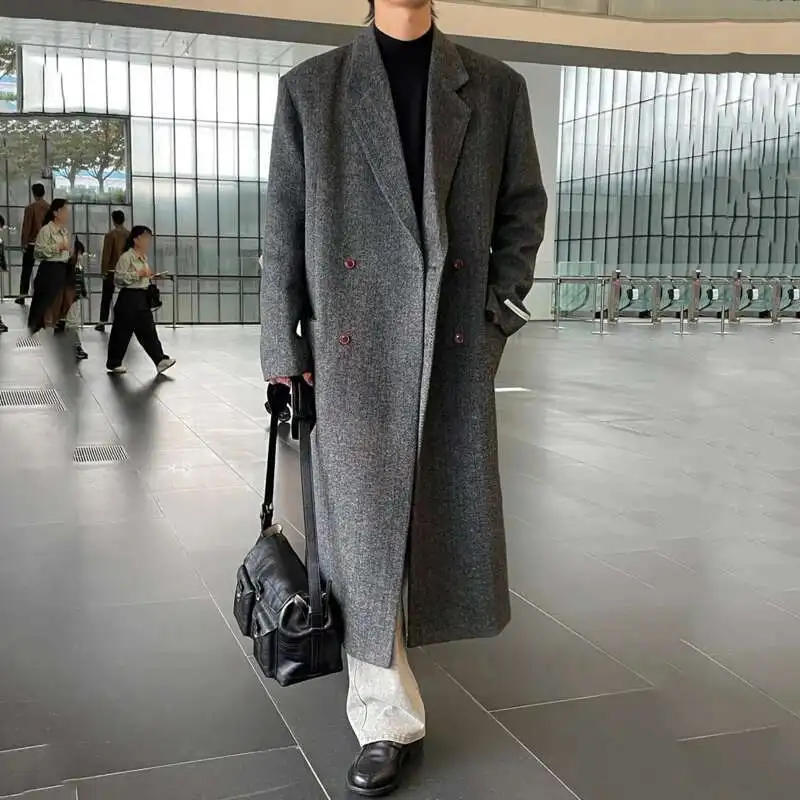
Strategic Layering: Warmth Without Bulk
Mastering the art of layering underneath your cashmere overcoat allows you to extend its seasonal versatility while maintaining comfort in varying temperatures. The key is selecting layers that complement cashmere’s natural properties rather than working against them.
For optimal warmth without compromising your coat’s fit:
- Base layers: Choose thin, temperature-regulating fabrics like merino wool or silk rather than bulky cotton. These materials wick moisture away from the body while adding minimal bulk.
- Mid-layers: Fine-gauge sweaters in cashmere, merino, or quality wool blends provide significant warmth without excessive thickness. A lightweight vest can add core warmth without affecting sleeve fit.
- Suit jackets: When wearing your overcoat with tailored clothing, choose suits with natural shoulders and a trim fit to prevent excess bulk.
Temperature-based layering strategies can be adjusted for different conditions:
* For mild conditions (40-50°F/4-10°C): A lightweight shirt with optional thin sweater
* For cold conditions (25-40°F/-4-4°C): Base layer, light sweater or suit jacket
* For very cold conditions (below 25°F/-4°C): Base layer, mid-weight sweater or suit jacket, plus thin vest
Common layering mistakes include choosing bulky, low-quality synthetic sweaters that create excessive thickness without proportional warmth, or relying on cotton base layers that retain moisture and become cold when damp.
The principles of effective layering under cashmere focus on complementary materials that work together as a system rather than competing for space inside your coat.
Freedom of Movement: Ensuring Mobility and Comfort
Even a perfectly sized overcoat can feel uncomfortable if it restricts natural movement. A truly well-designed cashmere overcoat should allow you to move through your day without constant awareness of your outerwear.
To evaluate movement comfort, perform these simple tests when trying on an overcoat:
- Reach forward as if to shake hands – the back shouldn’t pull excessively
- Cross your arms across your chest – shoulders should accommodate this without strain
- Simulate entering and exiting a car by sitting and standing several times
- Raise your arms slightly (as if reaching for a subway rail) – coat shouldn’t rise above your waist
Key areas that affect movement include:
- Armhole positioning: Higher armholes generally allow better movement
- Sleeve width: Should permit bending without restriction
- Back construction: Center or side vents improve mobility
- Shoulder construction: Slightly extended shoulder lines accommodate movement better
The coat’s lining significantly impacts ease of movement. Quality linings like Bemberg (cupro) or silk allow the coat to slide smoothly over your clothing when moving, while cheaper polyester linings can cause friction and restrict movement. Some premium overcoats feature action pleats – small, hidden fabric folds at the upper back or under the arms that expand during movement.
If you notice the coat riding up excessively when reaching forward or feel restriction across the upper back during normal movements, consider sizing up or selecting a different cut that better accommodates your range of motion.
Weight Distribution and Quality Construction
A well-constructed cashmere overcoat distributes its weight evenly across your shoulders and torso, preventing the fatigue that comes from carrying an unevenly balanced garment. This weight distribution is largely determined by the coat’s internal structure and construction quality.
Quality indicators that enhance comfort through proper weight distribution include:
- Canvassed construction: Better-quality overcoats use canvas interlining (either full or partial) that conforms to your body over time, distributing weight more evenly than fused construction
- Balanced shoulder design: Weight should rest primarily on the shoulders without pulling forward or backward
- Strategic seam placement: Properly positioned seams help distribute tension evenly
- Appropriate weight for height: Taller individuals can comfortably wear slightly heavier coats
When trying on an overcoat, pay attention to how it feels after wearing it for several minutes. Does it seem to pull in one direction? Does the collar feel heavier than the rest? These are signs of imbalanced weight distribution that can cause discomfort during extended wear.
The quality of materials beyond just the cashmere itself contributes significantly to comfort. Examine the construction details of various overcoat options to identify features that enhance weight distribution and overall comfort.
Preserving the Softness and Comfort: Essential Care Practices
The exceptional comfort of a cashmere overcoat isn’t just a matter of initial quality – it requires ongoing care to maintain. Proper maintenance preserves the softness, warmth, and appearance that make your investment worthwhile. Without appropriate care, even the finest cashmere can become rough, misshapen, or damaged.
Caring for cashmere involves understanding its natural properties and treating the fibers with respect. The following sections will guide you through essential cleaning, storage, and maintenance practices that protect your overcoat’s comfort qualities while extending its useful life.
By following these recommendations, you’ll ensure your cashmere overcoat remains as luxurious and comfortable years from now as it was on the day you purchased it.
Proper Cleaning: Maintaining Cashmere’s Natural Properties
Cashmere requires special cleaning consideration to preserve its softness and structure. While the temptation might be to clean frequently, over-cleaning can actually damage the delicate fibers and reduce the material’s natural properties.
For routine care:
- Professional dry cleaning: Have your cashmere overcoat professionally dry cleaned only 1-2 times per season, ideally at the beginning and end of winter
- Specialist selection: Choose a dry cleaner with specific experience in luxury fabrics and ask about their cashmere cleaning process
- Brushing: Between cleanings, use a soft clothes brush to remove surface dirt and debris
- Airing: Hang your coat outside (in shade) for 30 minutes occasionally to freshen it naturally
For spot cleaning minor issues:
- Water spots: Gently blot (don’t rub) with a clean, slightly damp white cloth
- Oil-based spots: Apply a small amount of talcum powder, let sit overnight, then brush away
- Food spills: Remove solid matter with the edge of a spoon, then blot gently
- Avoid: Harsh chemicals, spot removers not specifically designed for cashmere, or vigorous rubbing
When sending your coat for cleaning, remove everything from pockets, point out any spots or stains, and request minimal pressing to avoid flattening the nap of the fabric. Upon return, allow the coat to air out thoroughly before storing or wearing.
Storage Solutions for Shape Retention and Protection
Proper storage is essential for maintaining your cashmere overcoat’s shape, protecting it from pests, and ensuring it’s ready to wear when temperatures drop again. The care you take during off-season storage directly impacts the garment’s longevity.
Essential hanging guidelines:
- Use wide, contoured wooden hangers that support the shoulders without creating pressure points
- Allow adequate space between garments in your closet to prevent crushing and maintain airflow
- Keep the top button fastened when hanging to maintain proper shape across the chest and shoulders
- Avoid wire or thin plastic hangers that can create pressure points or distortion
Ideal storage conditions include:
- Cool, dry environment with stable temperature (excessive heat can damage fibers)
- Protection from direct sunlight which can fade the color and weaken fibers
- Adequate air circulation to prevent mustiness
- Low humidity to discourage mold growth
For pest protection:
- Cedar blocks or rings (refreshed periodically with cedar oil)
- Lavender sachets (natural moth deterrent that adds a pleasant scent)
- Periodic inspection for signs of moths or larvae
- Avoid mothballs which contain harsh chemicals and leave unpleasant odors
For long-term off-season storage, consider using a breathable garment bag after cleaning. Many of the leather coat storage principles apply equally well to fine cashmere garments – both are natural materials that benefit from proper air circulation and protection from environmental extremes.
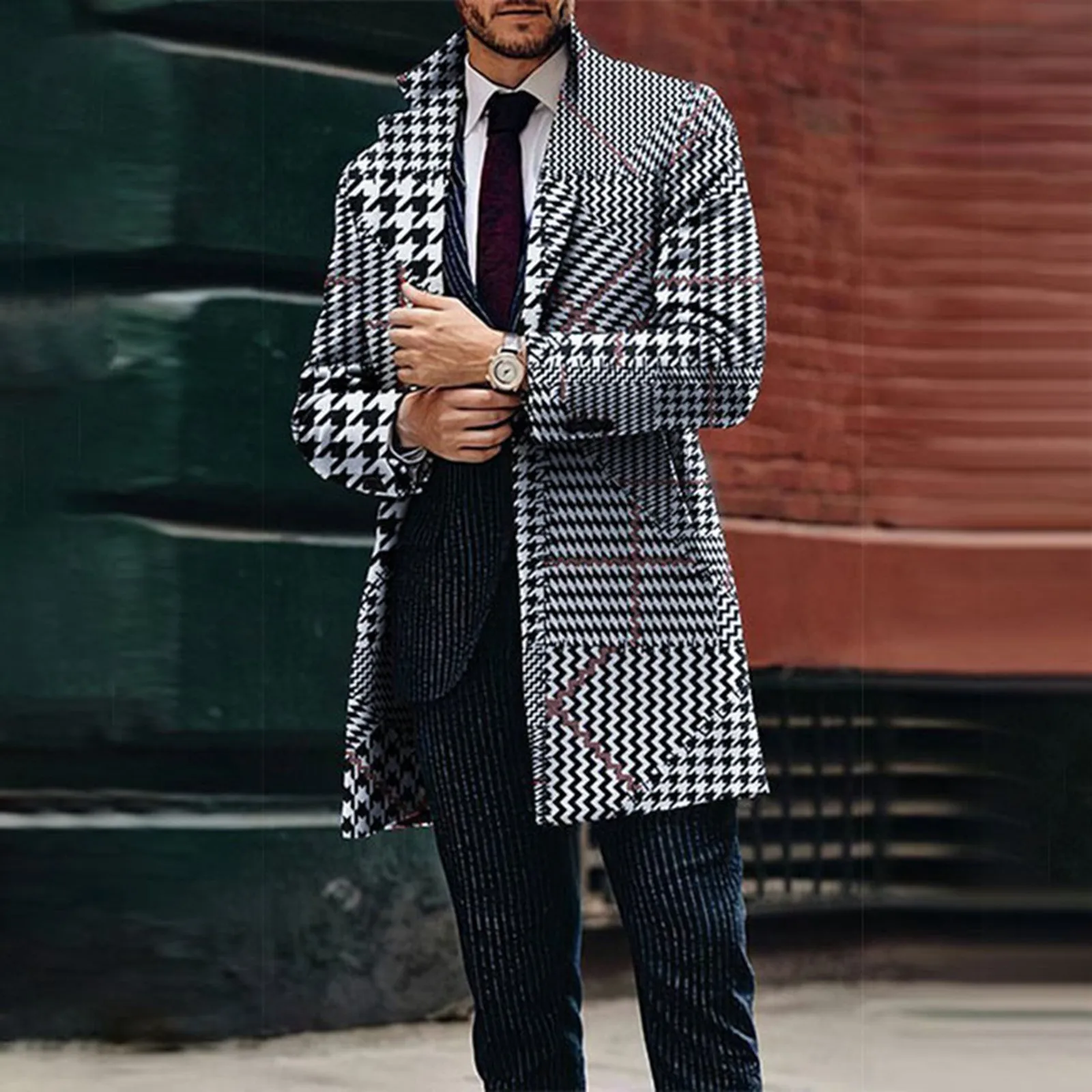
Maintenance Practices: Dealing with Wrinkles and Maintaining Softness
Regular maintenance keeps your cashmere overcoat looking its best between cleanings. Simple, consistent care practices preserve both the appearance and comfort of the garment.
For wrinkle removal:
- Steam treatment: Hang the coat in a bathroom during a hot shower, allowing the steam to relax fibers naturally
- Hand steaming: Use a garment steamer held 6-8 inches from the fabric, moving continuously to prevent water spots
- Never iron directly: If pressing is absolutely necessary, use the lowest wool setting with a pressing cloth between the iron and fabric
For maintaining surface appearance:
- Brushing: Use a soft-bristled garment brush and stroke in one direction to remove surface particles and revive the nap
- De-pilling: Gently remove any pills (small fiber balls) with a cashmere comb or sweater stone
- Rotation: Allow at least 24 hours of rest between wearings to let fibers recover their natural resilience
After exposure to snow or light rain:
- Hang the coat to dry naturally at room temperature
- Once dry, gently brush with a soft clothes brush to restore the nap
- Never use direct heat (radiators, hair dryers) to speed drying
If your coat develops a slightly flattened appearance in high-contact areas (like cuffs or collar), a light steaming followed by gentle brushing can help restore the material’s natural loft and softness.
Practical Wisdom for Your Cashmere Investment
Beyond fit and care considerations, several practical factors influence how you’ll experience and enjoy your cashmere overcoat. A truly wise investment considers not just the purchase itself but how the garment integrates into your lifestyle, climate, and personal needs.
This section addresses common questions and provides guidance on maximizing the practical value of your cashmere overcoat. By understanding these contextual considerations, you’ll be better equipped to select the right coat initially and use it appropriately to ensure the greatest return on your investment.
When to Wear Your Cashmere Overcoat: Seasonal Considerations
Cashmere overcoats shine in specific temperature ranges and weather conditions. Understanding these parameters helps you preserve your investment while enjoying maximum comfort.
Ideal temperature conditions for cashmere overcoats:
- Perfect range: 30-50°F (-1 to 10°C)
- Extended range with proper layering: 15-55°F (-9 to 13°C)
- Below 15°F (-9°C): Possible with strategic layering but may require additional protection in extreme cold
Weather considerations beyond temperature:
- Light precipitation: Brief exposure to light snow or drizzle is generally acceptable
- Moderate to heavy rain: Best avoided as water exposure can damage cashmere fibers and cause uneven drying
- Windy conditions: Cashmere performs exceptionally well as a wind barrier
- Humid conditions: Cashmere breathes well but repeated exposure to high humidity may affect shape retention
Regional adaptations:
- Dry, cold climates: Cashmere excels in these conditions with minimal special care
- Wet, cold climates: Consider a cashmere overcoat with water-resistant treatment or reserve for dry days
- Milder climates: Choose lighter weight cashmere (under 20 oz/567g) for greater versatility
For transitional seasons, cashmere’s natural temperature regulation works particularly well, especially with the various dress coat options available for different formality levels and weight requirements.
Is Your Cashmere Overcoat Appropriate for Daily Commuting?
Cashmere overcoats can certainly handle daily commuting with proper precautions and care. The key is understanding potential stress points and proactively protecting your investment.
For public transportation commuters:
- Be mindful of crowded spaces where the coat may be compressed or pulled
- Consider unbuttoning when seated to reduce stress on fasteners and fabric
- Watch for abrasive surfaces (concrete pillars, rough walls) that can damage the fabric
- Keep a small lint roller at work or in your bag for quick touch-ups
For driving commuters:
- Allow extra room when selecting your coat size if you’ll primarily wear it while driving
- Consider a slightly shorter length for easier movement in and out of vehicles
- Be conscious of seatbelt placement to avoid creating wear patterns
Rotation strategies to extend longevity:
- Ideally, alternate between two overcoats during peak season
- Allow at least 24 hours rest between wearings
- Consider a more durable wool coat for the harshest weather days, saving cashmere for moderate conditions
Simple protective measures:
- Focus care on high-contact areas like cuffs, collar, and pockets
- Consider protective treatment for these areas if you commute daily
- Keep a dedicated scarf to protect the collar from skin oils and makeup
- Brush your coat weekly during heavy use seasons
Mens Cashmere Overcoat, Mens Hooded Winter Coat, Mens Wool Blend Coat
Price range: $128.72 through $139.68 Select options This product has multiple variants. The options may be chosen on the product pageMens Black Overcoat, Mens Black Wool Coat, Mens Wool Overcoat
$339.18 Select options This product has multiple variants. The options may be chosen on the product pageMens Grey Overcoat, Mens Wool Blend Coat, Mens Wool Overcoat
$201.28 Select options This product has multiple variants. The options may be chosen on the product pageMens Herringbone Coat, Mens Long Overcoat, Mens Wool Overcoat
Price range: $197.16 through $203.69 Select options This product has multiple variants. The options may be chosen on the product pageMens Long Overcoat, Mens Topcoats
Price range: $189.40 through $196.88 Select options This product has multiple variants. The options may be chosen on the product pageMens Long Overcoat, Mens Tweed Coat
Price range: $397.49 through $409.96 Select options This product has multiple variants. The options may be chosen on the product page
Does a Heavier Cashmere Overcoat Always Mean Better Quality?
While weight is one indicator of cashmere quality, it doesn’t tell the complete story. Understanding the relationship between weight and quality helps you make more informed purchasing decisions.
Typical weight ranges for cashmere overcoats:
- Lightweight: 18-21 oz/500-600g (suitable for milder climates or transitional seasons)
- Medium weight: 22-26 oz/625-740g (versatile for most winter conditions)
- Heavyweight: 27-32 oz/765-907g (designed for colder climates)
Quality factors beyond simple weight:
- Cashmere grade: Higher grades (A and B) can provide better insulation at lower weights
- Weave density: A tightly woven lighter fabric may outperform a loosely woven heavier one
- Ply: 3-ply cashmere often provides better insulation than heavier 2-ply
- Finishing process: Proper finishing can enhance insulation properties without adding weight
Regional considerations:
- Colder climates generally benefit from weights above 24 oz/680g
- Moderate winter regions may find the 20-24 oz/567-680g range most versatile
- Areas with mild winters might prefer 18-20 oz/510-567g for greater comfort
When evaluating quality, look beyond weight to other indicators like even coloration, consistent texture, resilience when gently compressed, and the reputation of the manufacturer.
Can a Cashmere Overcoat Be Too Warm?
Cashmere’s natural temperature regulation makes it remarkably adaptable, but there are situations where even cashmere might provide more warmth than desired.
Potential overheating scenarios:
- Extended time in heated indoor environments
- Rapid transitions between cold outdoors and warm interiors
- Active movement (like brisk walking) in moderate temperatures
- Layering too heavily underneath in fluctuating conditions
Temperature management strategies:
- Strategic unbuttoning: Start with the top button when entering warmer environments
- Layering adjustments: Choose easily removable layers underneath
- Venting techniques: Briefly opening the coat while walking to release excess heat
- Coat selection: Choose lighter weight cashmere if you spend significant time indoors
The role of lining in temperature regulation:
- Silk linings enhance breathability and allow better heat release
- Bemberg/cupro provides good moisture management
- Full linings provide more consistent warmth than half linings
- Some premium overcoats feature different lining weights in body vs. sleeves for balanced comfort
Quality cashmere has natural breathability that helps prevent overheating, but selecting the appropriate weight for your typical usage scenarios remains important for optimal comfort.
Should You Choose a Classic or Contemporary Fit for Longevity?
The fit style you choose affects not only your current appearance but also how timeless your coat will remain as fashion trends evolve.
Classic fit characteristics:
* Slightly roomier cut through chest and body
* Straighter lines with minimal waist suppression
* Shoulder lines that align with or slightly extend beyond natural shoulders
* Fuller sleeves that accommodate layers comfortably
* Traditional lapel proportions (typically 3-3.5 inches at widest point)
Contemporary fit characteristics:
* More shaped silhouette with defined waist suppression
* Shoulder lines that follow the natural shoulder more closely
* Narrower sleeves with less room for heavy layering
* Slimmer lapels (typically 2.5-3 inches at widest point)
* Slightly shorter length overall
For maximum longevity, consider:
* Moderate styling that borrows from both classic and contemporary elements
* Lapel width proportional to your frame (avoiding extremes)
* Traditional single or double-breasted closure systems
* Timeless details rather than trendy embellishments
Body type considerations:
* Athletic builds often look best in moderately tailored fits that showcase shoulders
* Slimmer builds may prefer a slightly more structured classic fit for presence
* Larger frames typically benefit from clean lines without excessive fabric
The comprehensive style guide for cashmere overcoats provides additional insights into specific style elements that tend to remain timeless across fashion cycles.

Final Fit and Comfort Assessment: Your Pre-Purchase Checklist
Before finalizing your cashmere overcoat purchase, use this comprehensive checklist to ensure you’re making a decision you’ll be satisfied with for years to come. Taking the time to thoroughly evaluate fit and comfort before committing will help you avoid costly mistakes and disappointment.
Shoulder Assessment
* Seams align precisely with edge of natural shoulders
* No dimpling or divots in upper sleeve
* Shoulder line creates clean transition to sleeve
* Comfortable movement when arms are crossed or extendedLength Evaluation
* Proportional to your height (typically knee or just above)
* Covers underlying layers completely
* Maintains balanced silhouette from front and side views
* Provides intended coverage when seatedSleeve Inspection
* Extends to base of thumb when arms are relaxed
* Allows 1/4-1/2 inch of shirt cuff to show with formal wear
* Maintains proper length when arms are slightly bent
* Left and right sleeves are perfectly symmetricalBody Fit Verification
* Creates clean lines without pulling when buttoned
* Allows comfortable insertion of flat hand at chest level
* No horizontal wrinkles across chest or back
* Sits properly when buttoned while seatedCollar Comfort Check
* Sits flush against back of neck without gapping
* Allows comfortable head movement in all directions
* Provides adequate protection without feeling restrictive
* Lapels lie flat without bowing when buttonedMovement Testing
* Comfortable reach forward motion
* Unrestricted arm crossing
* Easy seated position without excessive pulling
* Natural walking motion without coat shifting awkwardlyPractical Considerations
* Weight appropriate for your climate
* Color and style versatile for your wardrobe
* Construction quality justifies the investment
* Potential for minor tailoring identified (if needed)
Remember that a timeless cashmere overcoat should inspire confidence and comfort from the moment you try it on. While minor alterations can improve fit, the fundamental elements – particularly shoulder fit and overall proportions – should feel right from the start.
When these elements align, you’ll have found more than just a winter coat – you’ll have secured a garment that provides exceptional comfort, sophisticated style, and lasting value for many years to come.

